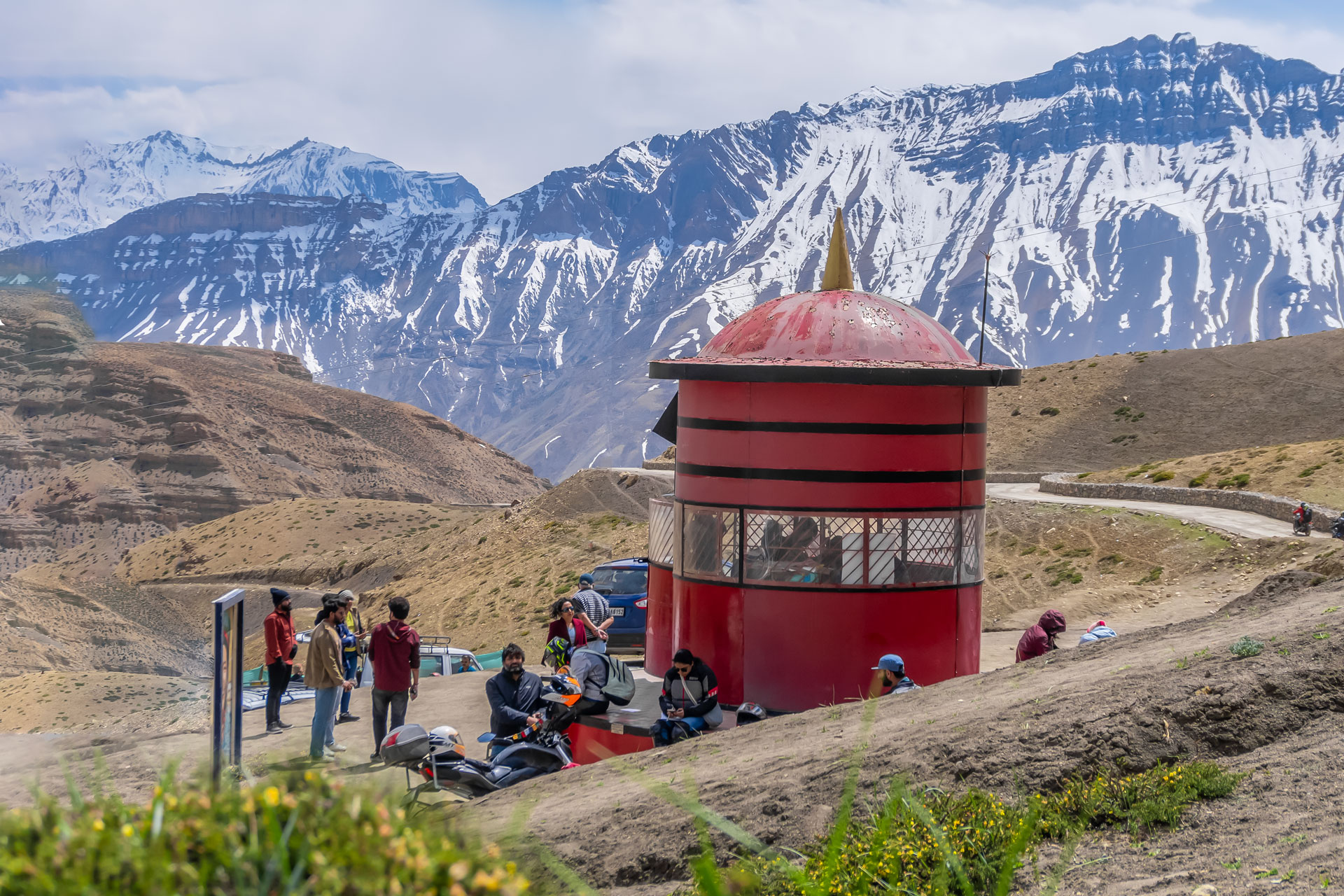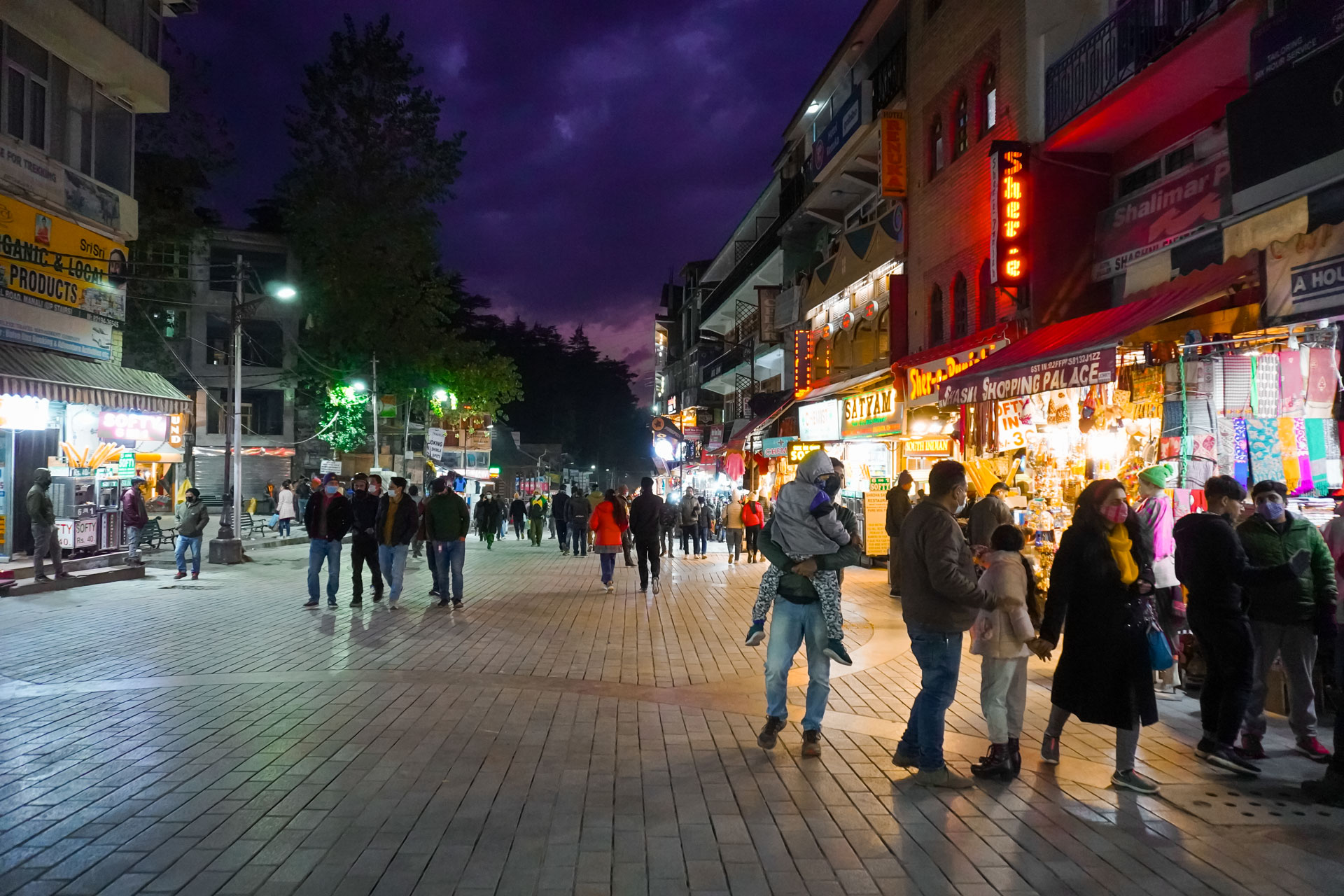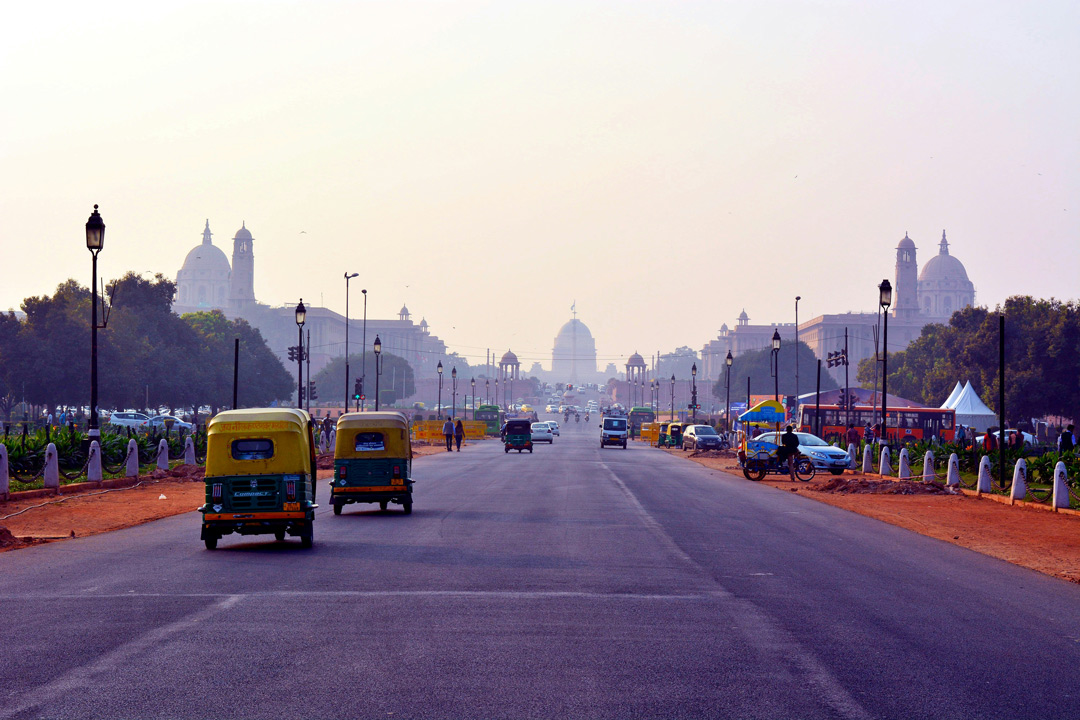7 Days 6 Nights
Daily Tour
21 people
___

Dist: 347 km | Time: 7 to 9 hr | Altitude: 239 to 2270m
Late at Night, you will board your Bus or cab to Shimla via Chandigarh and Solan. After driving 350 kilometres, you will reach Shimla the following day. The journey will take around 7 to 9 hours.
Meals: Nil
Night: Overnight Journey by Volvo Bus or Cab

Dist: 220km | Time: 7 to 9 hr | Altitude: 2270m to 2630m
You will arrive at Shimla hill station in the morning, from where you will start driving towards Sangla/Rakcham. After reaching the hotel, you will check in, and if time permits, you will visit the last Indian village on the Indo-Tibetan border, Chitkul.
Meals: Dinner
Night: Stay at Homestay in Sangla/Rakcham

Dist: 90km | Time: 5 to 9 hr | Altitude: 2630m to 2960m
After breakfast, you will depart for Kalpa via Rakcham, Karcham, Yusaring and Zero Point Reckong Peo, Kaza Junction. Upon arrival, you will check into the hotel and visit Suicide Point and nearby attractions.
Meals: Breakfast and Dinner
Night: Stay at the Hotel in Kalpa

Dist: 160km | Time: 7 to 10 hr | Altitude: 2960m to 3280m
Today, you will set off for Tabo. You will visit the famous Nako village, Nako Lake, and Nako Monastery on the way. After this, you will halt at Khab, where the Spiti and Sutlej rivers meet. If time permits, you can also visit Gue monastery.
Meals: Breakfast and Dinner
Night: Stay at Homestay/Hotel in Tabo

Dist: 180km | Time: 7 to 10 hr | Altitude: 3280m to 3800m
After breakfast, you will visit Tabo Monastery. Later, you will also explore Pin Valley and Dhankar Monastery. The Dhankar monster is locked between the rocky spurs at the top of a cliff. On the way to Kaza, you will stop by Lingti Waterfall.
Meals: Breakfast and Dinner
Night: Night Stay at the homestay in Kaza

Dist: 50km | Time: 7 to 10 hr | Altitude: 3800m to 4590m
After breakfast, you will see a Buddha statue overlooking the valley in Langza. Later, you will visit one of the most remote villages, Komic and the highest post office in the world, Hikkim.
Meals: Breakfast and Dinner
Night: Night Stay at the homestay in Kaza

Dist: 101km | Time: 8 to 10 hr | Altitude: 3800m to 4500m
In the morning, you will leave Kaza and head to Chandratal Lake. On the way, you will visit the famous Key Monastery, after which you will cross Asia’s second-highest suspension bridge, Chicham Bridge. On the way, you will visit Key Monastery and Kibber Village.
Meals: Breakfast and Dinner
Night: Night Stay at the camps in Chandratal

Dist: 111km | Time: 8 to 10 hr | Altitude: 4500m to 2050m
Today, you will descend towards Manali via the Batal, Chhatru, and Koksar before crossing the 9 km long Atal Tunnel. After arriving in Manali in the evening, you will depart for Delhi by Volvo bus or cab.
Meals: Breakfast
Night: Overnight Journey by Volvo Bus

Dist: 509km | Time: 12 to 16 hr | Altitude: 2050m to 300m
After an overnight journey from Manali, you will arrive in Delhi, marking the end of your adventure through the stunning landscapes of Spiti Valley. With a heart full of unforgettable experiences, you'll bid farewell to the mountains and head home.
Meals: NA
Night: NA
We understand that plans can change, but the booking amount is non-refundable due to the costs we incur in preparing for your tour or activity. If you wish to reschedule for a different date, we'll adjust it to the same package, providing you with the necessary flexibility.
If you have paid the total amount but cancelled the package. You will be provided with a refund, as mentioned below:
Tours or activities might be cancelled due to unexpected circumstances, such as storms, heavy rainfall, sudden closures of specific areas, government restrictions or anything beyond our control. In such a scenario, we will provide an alternate tour or activity. However, no refunds will be provided.
The valleys of Lahaul Spiti and Kinnaur concentrate all the beauty of northern India in the eyes of many. The Summer Spiti 4×4 Expedition takes you through the Spiti Valley, where mountainous desert landscapes and Buddhist inhabitants evoke memories of Northern Ladakh. Meanwhile, the densely green Kinnaur Valley, rich in trees and rivers, offers a quieter, less touristy experience reminiscent of the Kullu and Parvati valleys. Life is slower and simpler here, and locals are peaceful and smiling. The Summer Spiti 4×4 Expedition is the perfect adventure for travellers seeking to experience diverse cultures and stunning scenery without too much indulgence.
The Summer Spiti 4×4 Expedition route connects scattered villages in the valleys, accessible via organized jeep or lock usage. Manali is an ideal starting point for the expedition, where it’s advisable to leave behind unnecessary belongings. The expedition’s route length is flexible, catering to travellers with limited time and those wishing to linger in each village for extended periods. The Summer Spiti 4×4 Expedition lasts about 7 to 10 days for the average traveller.
Sarahan: The pastoral village of Sarahan (altitude—2,313 m) lies west of Kinnaur on a verdant ridge overlooking the Sutlej River. It’s famous for the impressive Bhimakali temple dedicated to the goddess Kali—the goddess of time, change, and destruction. The village was also the refuge of the last queen of the Bushahr kingdom, which ruled the area until the early 19th century.
Bhimkali Temple: This eight-hundred-year-old temple is dedicated to the fearsome goddess Kali and is the prominent building in Sarahan. Its spacious and impressive architecture reflects the Buddhist influence typical of the border area with Tibet. Entrance is free, but visitors must remove shoes and leave personal belongings outside.
Kalpa: An ancient village about 500 years old, Kalpa is located on a ridge above Reckong Peo at an altitude of 2,800 m. According to Hindu belief, it serves as Shiva’s winter abode. The village features picturesque alleys, sprawling apple orchards, and breathtaking views of the Kinnaur Kailash range.
Narayan Nagini Temple: This temple complex exemplifies the craftsmanship of Kinnaurian wood artisans, with impressive sculptures and ornate buildings. Entry is free, but visitors should dress respectfully.
Hu-Bu-Lan-Kar Gompa: A small Tibetan Buddhist temple at the village’s end, offering views of the Kinner-Kailash peaks.
Sangla: Situated at approximately 2,650 m, Sangla is a small village in the heart of the valley of the same name. The Baspa River flows through the town, and visitors will find the Kamru fortress once the seat of the Bushahr kingdom.
Chitkul: Known for its picturesque views and tranquil atmosphere, Chitkul (altitude: 3,400 m) is the last settlement before the Tibetan border. Its scenic beauty has earned it the title of “the most beautiful valley in the Himalayas.”
Rakcham: This small village lies between Chitkul and Sangla and is often overlooked by travellers, making it a peaceful retreat.
Nako: Located at an impressive height of 3,600 m, Nako requires an Inner Line Permit for non-Indians. The landscape gradually shifts to a drier climate as visitors approach Spiti Valley.
Nako Lake: Adjacent to the village, this lake is ideal for leisurely walks or picnics while enjoying views of snow-capped peaks.
Tabo: At an altitude of 3,300 m, Tabo boasts the oldest active monastery in India, highly regarded by the Dalai Lama.
Tabo Monastery: Founded over 1,000 years ago, the modest monastery offers a unique charm and features a library and a small museum.
Dhankar: This ancient gompa, perched atop a cliff at 3,900 m, offers stunning views and ancient wall paintings.
Lake Dhankar (Dhankar Tso): A beautiful lake located about a kilometre from the Dhankar monastery, rewarding hikers with breathtaking views.
Mud and Pin Valley: The village of Mud (altitude: 3,800 m) is hidden in the Pin Valley National Park, offering beautiful and unique views.
Kungri Gompa: This large gompa, built in the 14th century, overlooks the valley’s magical scenery and is worth a visit.
Kibber: At 4,205 m, Kibber is the highest village accessible by vehicle. It is known for its white mud houses and stunning landscapes.
Ki / Kye / Key Monastery: Perhaps the most impressive monastery in Spiti, it features ancient scrolls and wall paintings but has strict rules regarding photography.
Kaza: As the capital of Spiti Valley, Kaza is the busiest place and the only location to fill up on gas.
Chandra Tal: This stunning lake at 4,300 meters can be reached via a lovely hike and offers a spectacular setting.
Kunzum La: At 4,590 meters, Kunzum La is a mountain pass that leads to Spiti from Lahol. It features a temple and stunning panoramic views.
The Summer Spiti 4×4 Expedition offers travellers a remarkable journey through these beautiful valleys, immersing them in northern India’s rich culture and breathtaking landscapes.
The wide variety of topography and vegetation, along with the cultural richness and hospitality of the inhabitants, make the Summer Spiti 4×4 Expedition an unforgettable experience for adventure seekers With Uncia Trails.
Yes, oxygen levels drop in Spiti Valley due to its high altitude and sparse vegetation. This drop is more pronounced during winter, when temperatures can plunge significantly and heavy snowfall occurs. Although oxygen deficiency can cause breathing issues, it is generally less severe than in Ladakh. Travellers typically don't need prior acclimatisation, but avoiding proceeding only proceeds is advisable if you experience breathing difficulties.
The optimal time to visit Spiti Valley is between June and September. During these months, you'll enjoy pleasant weather, clear skies, and open roads, making it ideal for sightseeing and outdoor activities. This period is also great for experiencing cultural festivals like Losar.
Spiti Valley is unique for its cold desert climate, high altitude, and rugged landscapes, resembling Tibet's terrain. It features dramatic snow-capped mountains, deep valleys, and some of the world's highest-inhabited villages. The local Tibetan culture's blend of Hindu and Buddhist influences adds to its distinctiveness. Spiti is also known for its adventure tourism and ancient monasteries like Dhankar, Key, Tabo, and Lhalung.
Asthma patients should be cautious when visiting Spiti Valley due to its high altitude, which can reduce oxygen levels and potentially worsen breathing difficulties. The nearest medical centre is Reckong Peo, an 8–12 hour drive away. It's advisable to avoid travelling beyond Manali, where the air pressure is lower. If you visit, bring an inhaler, test new equipment before your trip, monitor your health, and avoid overexertion.
Yes, you can see snow in Spiti Valley from October to February. During these months, the region experiences heavy snowfall, transforming into a winter wonderland with snow-covered peaks, frozen lakes, and frozen waterfalls. Winter in Spiti offers unique experiences like skiing, snowboarding, and snow trekking, as well as the chance to spot snow leopards. If visiting in winter, prepare for the harsh climate with warm clothing and consider renting a taxi.
Travelling to Spiti Valley can be safe with proper preparation. Due to its high altitude, altitude sickness can occur, causing symptoms like nausea and dizziness. To minimise risks, spend a day in a lower altitude area like Shimla or Manali before heading to Spiti. Stay hydrated, avoid alcohol and smoking, take altitude sickness medications, and consult a doctor before your trip.
Spiti is called the "Middle Land" because it is between India and Tibet. The name "Spiti" comes from "Piti," meaning "the middle land," as the valley is surrounded by mountain ranges separating it from Ladakh, Tibet, Bushahr, and Kullu.
Spiti Valley in Himachal Pradesh, India, is a cold desert characterised by its arid conditions due to its location in the rain shadow of the Himalayas, resulting in minimal rainfall. It receives an average of around 50 millimetres (2 inches) of rain annually and experiences snowfall of fewer than 200 centimetres (6.6 feet). The valley endures extreme temperatures, with winter lows dropping to −25°C (−13°F) and summer highs reaching 15°C (59°F).
Spiti Valley can be visited during the monsoon season (July–September), but it's not ideal due to risks like landslides, road closures, and slippery conditions. To ensure a safe trip, be prepared for landslides, bring rain gear, watch for shooting stones, protect your electronics and clothes, and carry spare vehicle parts.
People visit Spiti Valley for its stunning scenery, rich Buddhist culture, diverse wildlife, and unique attractions. The valley offers spectacular landscapes with rugged mountains, snow-capped peaks, ancient monasteries, and wildlife like Himalayan blue sheep and snow leopards. Notable sites include Chandratal Lake, Suraj Tal, and the Chicham Bridge. The challenging journey adds to the allure for many travellers.
Spiti Valley is approximately 150 km long and covers an area of 7,828.9 km². It is primarily part of the Lahaul and Spiti districts, with a small portion in the Kinnaur district.
Kaza, the Spiti Valley's main town and administrative hub, is located on the Spiti within the remote Lahaul and Spiti district of Himachal Pradesh, India. It sits at an altitude of 11,980 feet above sea level.
You can drive to Spiti Valley, which offers a unique experience of traversing high-altitude roads and Himalayan landscapes. However, it can be challenging due to the cold weather, rugged terrain, and high altitude of around 4,000 meters. Acclimatising in Shimla or Manali is recommended before heading to Spiti, and a 4x4 SUV with snow chains should be considered if travelling in winter. Be prepared for challenging road conditions and potential congestion.
Spiti Valley includes a range of attractions:
Monasteries: Key Monastery, Dhankar Monastery, and Tabo Monastery offer historical and cultural insights.
Villages: Kibber, the world's highest motorable village, and Hikkim, home to the highest post office, are notable for their unique settings.
Lakes: Chandratal, Nako Lake, Suraj Tal, and other lakes enhance the valley's natural beauty.
The Toyota Innova is a good choice for travelling to Spiti Valley. Its robust build and high ground clearance make it suitable for handling rugged terrain and challenging road conditions. The Innova offers ample space and comfort, which is beneficial for long journeys and high-altitude travel. However, for winter visits, consider equipping it with snow chains. Ensure regular maintenance and check the vehicle’s condition before embarking on the trip.
Yes, you can visit Spiti Valley in February. This month offers a unique winter experience with snow-covered landscapes and frozen lakes. However, be prepared for extreme cold temperatures, heavy snowfall, and challenging road conditions. A 4x4 vehicle with high ground clearance and snow chains is recommended. Ensure you are well-prepared for the harsh weather and check road conditions before travelling.
Yes, Spiti Valley is generally considered safe for female travellers. The region is known for its hospitality and respect towards visitors. By following safety tips and including top destinations in your itinerary, solo female travellers can have a memorable and secure experience.
Yes, landslides can occur in Spiti Valley, especially during the monsoon season. It's essential to stay informed about road conditions and travel cautiously, as landslides can impact accessibility and safety.
Leave a review